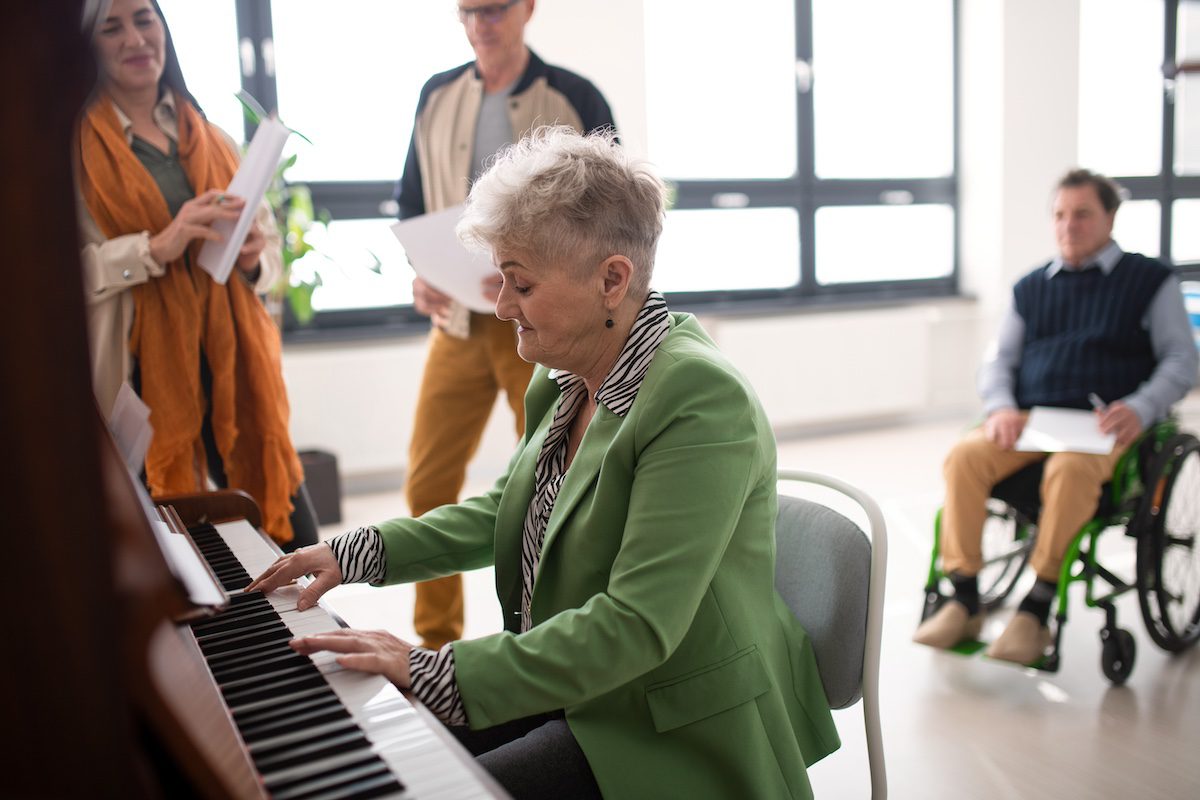As we age, our bodies undergo various changes, including a decline in strength, balance, and flexibility, making us more susceptible to falls.
According to the Centers for Disease Control and Prevention (CDC), falls are the leading cause of injury-related deaths among older adults and are a major public health concern. However, many falls are preventable with proper home safety precautions and modifications to the home environment.
In this blog post, we will explore some essential tips for ensuring home safety and improving mobility to prevent falls in older adults.
Understanding the Risks
Before delving into preventive measures, it’s crucial to understand the factors that contribute to falls in older adults. Some common risk factors include:
Muscle Weakness
Before delving into preventive measures, it’s crucial to understand the factors that contribute to falls in older adults. Some common risk factors include muscle weakness, which occurs due to a natural decline in muscle mass and strength with age.
Loss of muscle mass and strength can impair balance and stability, making it more challenging to maintain proper posture and control movements.
Poor Balance
Before delving into preventive measures, it’s crucial to understand the factors that contribute to falls in older adults. Some common risk factors include poor balance, which can result from aging-related changes in sensory systems and musculoskeletal function.
Aging can affect the body’s ability to maintain balance by compromising coordination and proprioception, increasing the risk of falls during daily activities.
Medication Side Effects
Before delving into preventive measures, it’s crucial to understand the factors that contribute to falls in older adults.
Some common risk factors include medication side effects, as certain medications commonly prescribed to older adults can cause dizziness, drowsiness, or lightheadedness.
Older adults need to be aware of potential side effects and discuss them with their healthcare provider to minimize the risk of falls.
Vision Problems
Before delving into preventive measures, it’s crucial to understand the factors that contribute to falls in older adults. Some common risk factors include vision problems, such as age-related changes in visual acuity, peripheral vision, and depth perception.
Age-related vision changes, such as reduced depth perception or peripheral vision, can increase the risk of tripping or falling, particularly in dimly lit environments or unfamiliar surroundings.
Home Hazards
Before delving into preventive measures, it’s crucial to understand the factors that contribute to falls in older adults. Some common risk factors include home hazards, such as clutter, slippery floors, poor lighting, and uneven surfaces.
Clutter and obstacles in walkways increase the likelihood of trips and falls, while slippery surfaces and poor lighting create additional hazards that can lead to falls and injuries.
Regular assessment and modification of the home environment are essential for reducing fall risks and promoting safety and independence.
Tips for Home Safety
Creating a safe living environment is crucial for preventing falls in older adults. Here are some tips to make your home safer:
Remove Clutter
Creating a safe living environment is crucial for preventing falls in older adults. Keep pathways clear of clutter, including loose rugs, electrical cords, and furniture that obstructs movement, as these items can pose tripping hazards. Regularly decluttering your home and keeping floors clear will significantly reduce the risk of falls and injuries.
Improve Lighting
Creating a safe living environment is crucial for preventing falls in older adults. Ensure that all areas of your home are well-lit, especially stairways, hallways, and entrances, to enhance visibility and reduce the risk of missteps.
Consider installing nightlights in bedrooms and bathrooms to illuminate pathways at night, making it easier to navigate and preventing falls in low-light conditions.
Install Grab Bars and Handrails
Creating a safe living environment is crucial for preventing falls in older adults. Place grab bars in bathrooms near toilets, showers, and bathtubs to provide support when getting in and out, reducing the risk of slips and falls.
Additionally, installing handrails on both sides of staircases will assist with balance and stability, especially when ascending or descending stairs, minimizing the likelihood of falls and injuries.
Secure Carpets and Rugs
Creating a safe living environment is crucial for preventing falls in older adults. Use non-slip mats or double-sided tape to secure carpets and area rugs to the floor, preventing them from shifting or bunching up, which can cause tripping.
Securing carpets and rugs will create a safer walking surface throughout your home, reducing the risk of falls and enhancing overall safety.
Organize Kitchen and Bathroom Items
Creating a safe living environment is crucial for preventing falls in older adults. Store commonly used items within easy reach in your kitchen and bathroom to avoid the need for reaching or bending over excessively, minimizing the risk of losing balance and falling.
Organizing cabinets and shelves will promote accessibility and safety, making daily tasks easier and reducing the likelihood of accidents.
Use Assistive Device
Creating a safe living environment is crucial for preventing falls in older adults. If necessary, use walking aids such as canes or walkers to provide additional support and stability while moving around your home.
Using an assistive device can significantly reduce the risk of falls and injuries, especially for those with mobility issues or balance problems.
Keep Emergency Contacts Handy
Creating a safe living environment is crucial for preventing falls in older adults. Ensure that emergency phone numbers, including those of family members, caregivers, and healthcare providers, are easily accessible in case of a fall or other medical emergency.
Keeping emergency contacts handy will expedite assistance in the event of an accident, ensuring prompt medical attention and minimizing the impact of falls on overall health and well-being.
Enhancing Mobility
Maintaining a healthy lifestyle, including a balanced diet and adequate hydration, can support overall mobility and physical function. Additionally, consulting with a healthcare provider or physical therapist can provide personalized recommendations and exercises tailored to individual needs and abilities.
Remember, consistency is key to improving mobility, so integrating these strategies into daily routines can lead to long-term benefits and a higher quality of life for older adults.
Final Thoughts
Preventing falls in older adults requires a comprehensive approach that addresses both home safety and mobility. By implementing these tips and making necessary modifications to the living environment, older adults can reduce their risk of falls and maintain their independence and quality of life.
Remember, it’s never too late to take steps to prevent falls and promote a safe and active lifestyle. Stay vigilant, stay active, and prioritize safety to enjoy a fulfilling and injury-free life as you age.




